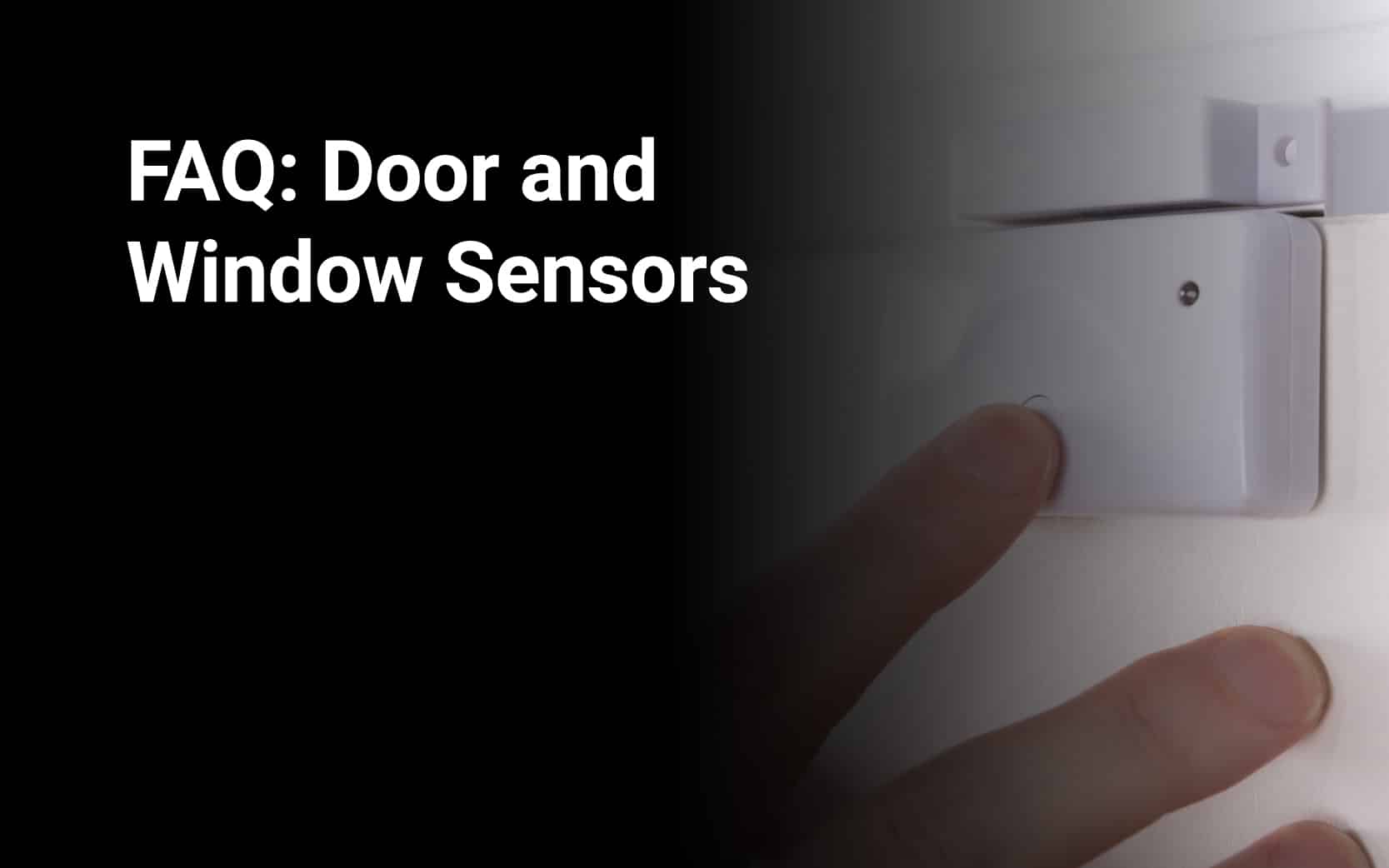The quest for a more secure workplace often leads business owners to the (correct) conclusion that the points of entry should be a company’s first line of defense. In addition to locks and access control systems, door and window sensors — commonly known as contact sensors — are among the best ways to prepare your business against external threats.
Though they may come in different shapes and sizes, door and window sensors are always simple, effective, and cost-efficient solutions for business owners in need of enhanced security. Let’s explore some of the first questions you may encounter when considering this vital security system installation.
7 Questions and Answers on Contact Sensors
What are door and window sensors, and how do they work?
The term “door and window sensors” typically refers to contact sensors — a device specifically engineered to detect when a door or window is opened and respond accordingly. This makes them an essential part of any commercial intruder alarm system.
Most sensors consist of two parts: a sensor and a magnet. When the door or window is closed, these pieces stay aligned. Only when the alignment is disrupted (e.g., when the door or window is opened) will the sensor trigger an alert. This response may send a notification, sound an alarm, alert a monitoring center, or all of the above. Many systems also include glass-break sensors, which sense for breaking glass instead of disrupted contact.
What are the everyday advantages of contact sensors?
Door and window sensors represent a substantial upgrade with numerous advantages for businesses, especially those at risk for after-hours burglary. Here are some notable benefits:
Intrusion prevention — Through instant alerts and audible alarms, these devices allow you to detect, deter, and respond to potential intruders.
24/7 protection — Paired with professional monitoring services, these sensors provide around-the-clock coverage, even when nobody is on site to respond.
Cost-effectiveness — Sensors are a budget-friendly solution compared with most security installations and require minimal cost to upkeep.
Flexibility — Contact sensors are ideal for diverse applications; wireless signals extend their range, and more can always be installed for additional coverage.
Where should door and window sensors be installed?
Though the simplest answer is “on all the doors and windows,” there is a fair amount of nuance to a contact sensor placement strategy. For optimal coverage, prioritize key entry points such as main entrances, back doors, ground-floor windows, loading doors, and emergency exits (if permitted by local fire codes). For a more strategic approach, consider having your sensors installed by trained security professionals.
Are door and window contact sensors wireless?
Yes, the majority of modern sensors are wireless, making them easier to install and maintain without the need for complicated hardwiring. Most contact sensors use radio frequencies or Wi-Fi to connect with central security systems. The lack of wires means these devices can be implemented on doors and windows throughout your facility, regardless of proximity to an electrical outlet.
How much maintenance do contact sensors need?
While all security devices should receive some level of routine inspection to ensure their continued effectiveness, contact sensors are about as low-maintenance as it gets. Here are a few rules of thumb to keep in mind:
- Most devices require new batteries every 1 to 2 years, depending on the model.
- Sensors should be tested regularly to ensure continual functionality.
- Over time, wear and tear may result in damage or misalignment.
- Professional maintenance is always the most reliable solution for security tech.
Can door and window sensors be tampered with?
While specifics may vary with different models, high-quality sensors are often designed with tamper-resistant features. For example, certain models may send an alert if the sensor is removed or damaged. When in doubt, ask your local security provider. Professionals are more likely to provide the type of device you’re looking for.
How do contact sensors connect with other security systems?
Contact sensors are an integral part of most intruder detection systems, providing a valuable first line of defense against forced or unauthorized entry. Still, these devices work best in conjunction with other systems, including:
- Cameras can be triggered to record when a contact sensor is tripped.
- Access control systems can be used to lock and unlock doors remotely.
- Alarm systems can deter intruders and call for help simultaneously.
- Mobile apps allow you to control all of these from your smart device.
How can PEAK Alarm help with door and window sensors?
At PEAK Alarm, we’re the Mountain West’s preferred resource for security technology, service, and installation because we provide the best solutions our industry has to offer. Our technicians are experts in formulating and executing security strategies based on the specific needs of a location. Our monitoring team, meanwhile, works tirelessly around the clock to ensure immediate response to any detected threat.
If you need door and window protection, we can recommend, install, and service the most applicable technology for your needs and budget. Get in touch to ask about our available catalog of devices.
It’s Time to Invest in Your Business’s Security
Ready to take the next vital step in your commercial security strategy? PEAK Alarm Company is here to help. We’ll have our experts analyze your site for unique risk factors and craft a strategy that covers you from all angles. Ask about a free consultation today.
Protect what matters most to you. Contact PEAK Alarm today.

